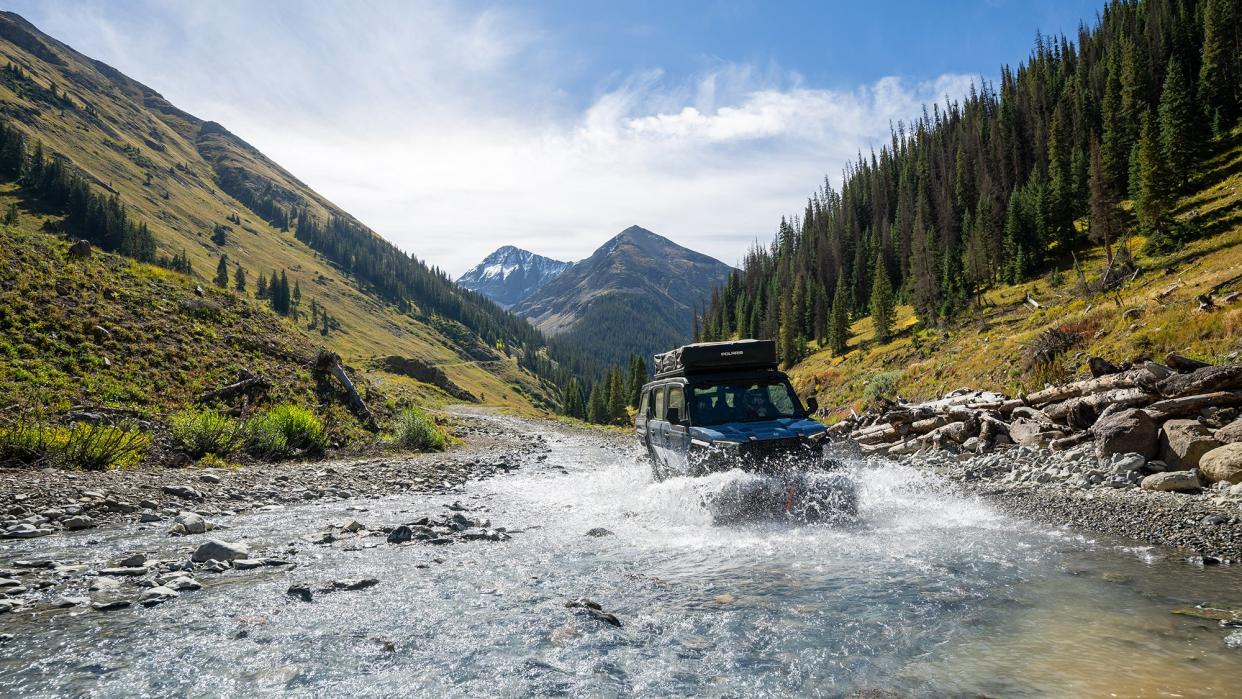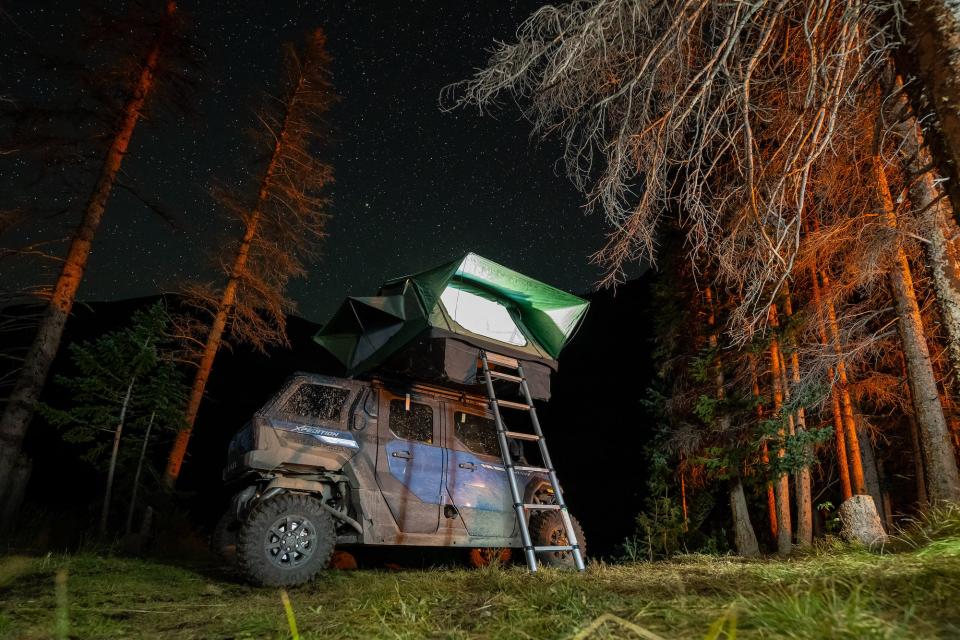This new Polaris off-roader is the ultimate vehicle for rugged adventures

As I’m riding through the wilds of southwest Colorado, up through Cinnamon Pass at over 12,000 feet in altitude, I'm thinking about the suspension on the Polaris Xpedition UTV (utility task vehicle) I'm piloting.
Yes, of course I’m also intently focused on the dirt road as we navigate across narrow cliffside paths and splash through mud puddles. But the premium Fox shocks in this off-road vehicle keep my tires planted as they flex with the ground beneath me, absorbing the dips, bumps, and rocks at an impressive rate. The all-new Xpedition, launched this May, seems to eat rocks for breakfast, lunch, and dinner. Here’s how it does that.
Machined shocks
Outdoorsy people—those who like camping, fishing, hunting, hiking, biking, and more—occupy Polaris’ sweet spot. The company says the 2024 Polaris Xpedition is best described as an “adventure side-by-side” as opposed to the utility vehicles used on ranches and farms or the recreational vehicles you might see tearing across sand dunes in California. Side-by-side in this case means it has at least two seats, which you don’t see in some all-terrain vehicles like quad bikes or snowmobiles.
This vehicle has a flat roof made for carrying kayaks, fishing poles, traction boards, and rooftop tents, all available as accessories. After driving the Xpedition all day and then testing out the rooftop tent to camp out next to a waterfall, I concur that it checks all the boxes. When carrying just two people, the vehicle’s second row can be folded down to hold even more stuff, or the Xpeditioncan accommodate five people and less cargo. It’s also now available as a completely-enclosed UTV with both warm and cool climate control, the only side-by-side on the market to do so.

“We started from the ground up with a one-piece frame, which is going to make it a lot stronger,” Polaris sales manager Eric Borgen says. “Our older products had frames that would bolt together in the middle; having that one piece frame is obviously going to make it a lot more rigid, which is also going to help make sure that our roll cage doesn't flex.”
Layered into the new frame, the FOX Podium QS3 shocks are one of the key factors for a smooth ride. The shocks use “position sensitive spiral technology,” and that means two things. One, the equipment uses damping force, which controls vibration; and two, spiral grooves inside the shock body allow fluid to flow around the piston assembly, refining the movement.
“If you look inside of the actual shock body and you take it apart and you look down the barrel, it's very similar to what people do to rifles,” Borgen explains. “They've machined a groove—a corkscrew—in the body. So when the piston is going up and down inside the shock body, it allows the fluid to bypass the valving.”
What that means is when driving 20 miles an hour through rocky trails, or over a washboard road, a typical passenger vehicle would toss your head around inside the cabin uncomfortably. With these shocks, the ride in the Xpedition is smoothed out in a noticeable way. Instead of a handful of zones that get progressively stiffer, the UTV’s shocks are machined for a consistently composed ride for the passenger at various speeds and road conditions. Indeed, the only time I felt a significant impact across 100 miles in the San Juan mountains was when a rock got loose under me and hit the underside. The Xpedition crunched along and left it in the dust.
GPS off the grid
One thing that can strike fear into the heart of a new off-roader is getting lost. As more and more people explore the great outdoors (the trend has ticked noticeably upward in the last several years) they’re looking for ways to do it safely, and Polaris’ contribution to that is its Ride Command technology.
Ride Command provides a built-in GPS navigation and wayfinding system that works even if you’re out of cell coverage zones. It includes a million-plus miles of verified trails and allows riders to plan a route before heading out. Even more importantly, it can be set up as a group ride so the vehicles can band together and see each other on the map as a color-coded dot.
As Borgen, a desert-racing champion himself, led our group on a pre-established route, I could see at a glance on the map display in front of me how far ahead he was and what speed he was going. As a result, if I saw that he was slowing way down to let vehicles pass from the other direction (riders going uphill have the right-of-way on the trails) I could adjust even before I could see him through my windshield.
There is one thing Borgen tells our group before we set out, and it’s the most important thing we need to know above and beyond all of the technology and engineering: how to be a considerate off-road driver. Some drivers have sparked animosity by going too fast on the trails and creating an uncomfortable environment for others, squarely placing a spotlight on the industry.
The Polaris representative stresses the magnitude of being a considerate consumer, watching out for those who don't like the noise and the dust off-highway vehicles carry with them. In that vein, the company is working toward more electric vehicles, like its new 2024 Ranger XP Kinetic.
“Hikers are trying to enjoy the public land too,” he says. “So slow down; don't dust 'em out, please. We don't want to ruin our places to ride, because even though Jeeps and dirt bikes and side-by-sides are all different, we're all doing the same thing and we all need to work together to maintain our lands.”

